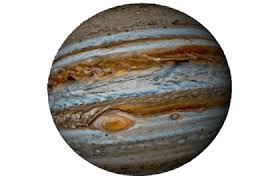The Night Sky: The Sky in May 2017
 By Dee Sharples – The giant planet Jupiter rules the night sky in May. Look for it in the southeast about one-third of the way up from the horizon around 9:00 PM. You can’t miss it because it looks like a very bright star, and shines brighter than any star in the night sky. You’ll be able to see Jupiter throughout the night as it moves into the southern sky and then sets in the west in the early morning.
By Dee Sharples – The giant planet Jupiter rules the night sky in May. Look for it in the southeast about one-third of the way up from the horizon around 9:00 PM. You can’t miss it because it looks like a very bright star, and shines brighter than any star in the night sky. You’ll be able to see Jupiter throughout the night as it moves into the southern sky and then sets in the west in the early morning.
The ringed planet Saturn follows Jupiter rising in the southeast at 11:30 PM at the beginning of the month. By the end of May it will rise 2 hours earlier. Saturn moves to high in the south in the early morning hours although it won’t shine nearly as brightly as Jupiter.
For a fabulous early morning show, look for the planet Venus rising in the east two hours before the Sun. It will look like a brilliant jewel shining at Magnitude -4.7 in the early part of the month and dims only slightly by the end. On May 22 a crescent moon will lie very close to Venus and create an especially pretty sight in the early morning.
Magnitude is how astronomers express the brightness of a star or planet as it appears to us on Earth. Brighter objects such as Venus have a negative number value. Dimmer objects, however, have a larger positive number value. Three examples in May are these planets. Venus, the brightest has a magnitude of
-4.7, Jupiter which is dimmer but still quite bright has a magnitude of -2.3 and Saturn which is the dimmest of the three shines at magnitude 0.2. Stars generate their own light, but planets shine by reflected light from the Sun so the apparent magnitude of a planet will vary depending on its particular circumstances and traits.
Several of the planets in our solar system are easy for new observers to find in the sky and don’t require any special equipment to enjoy.
